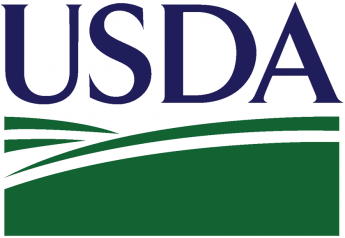2021 World Food Prize Winner Highlights Importance of Aquaculture in Feeding the Developing World

On May 11th, the World Food Prize Foundation announced the 2021 winner of its major award to Dr. Shakuntala Haraksingh Thilsted for her work in demonstrating the value of adding animal protein from aquatic sources to the diets of people in developing countries, and the boost to income that aquaculture activities add to household incomes in those regions as well. She will receive the award at the Laureate ceremony to be held in Des Moines, IA in October.
Dr. Thilsted, a descendent of Indian immigrants to the Caribbean nation of Trinidad and Tobago and currently a citizen of Denmark, conducted her initial groundbreaking work in studying the impact of adding fish protein to diets and developing techniques for cost-effective small-scale aquaculture operations on the ground in Bangladesh and Cambodia. She now serves as the Global Lead for Nutrition and Public Health at WorldFish, which is part of the 15-center global CGIAR international agricultural research system. WorldFish is headquartered in Malaysia, and their staff works in 20 developing countries in Africa, Asia, and the Pacific islands.
Her academic training is in the physiology of nutrition--she holds a Ph.D. from the Danish Royal Veterinary and Agricultural University in Copenhagen--and her initial work focused on the gains in food and nutritional security to low-income households in rural Cambodia from adding consumption of more fish into their diets. She later pioneered the development of pond polyculture operations, after determining that both large and small fish species could coexist in a single pond and could generate steady income for operators of even very small aquaculture ponds with appropriate feeding and management practices.
Human beings need to consume protein as part of their diets in order to thrive. Adding fish to the diets of food insecure people around the world helps provide essential amino acids crucial to meeting nutritional needs, but also micronutrients and essential fatty acids that are difficult to obtain in other foods typically eaten in those regions. While aquaculture products increasingly are found in the diets of many Asians, it is much less apparent among those living in Sub-Saharan Africa.
According to a 2020 report by the Food and Agriculture Organization (FAO) of the United Nations, per capita fish consumption globally grew from nine kilograms (on a live weight basis) in 1961 to 20.5 kilograms in 2018. Total fish consumption over that period grew more rapidly than did population, and it also grew faster than consumption of other forms of animal protein, such as red meat, poultry, and dairy products. The overall growth in per capita fish consumption was much greater in developing countries than developed countries over this period, 273 percent as compared to 40 percent.
The growth in availability of fin fish and marine shellfish to consume has come overwhelming through the expansion of fish produced through aquaculture operations over the last few decades. The FAO estimates that between 1990 and 2018, global aquaculture production of fish increased by 527 percent, while global fish production from capture in either rivers or oceans has increased by only 14 percent in the last three decades.
In 2000, U.S. soybean growers founded the World Initiative for Soy in Human Health as a program of the American Soybean Association. ASA/WISHH connects trade and development across global market systems, improving food security in Africa, Asia and Latin America. WISHH leads strategic partnerships for soy-based foods as well as animal feeds, including aquaculture.
From 2010-2015, WISHH led the U.S. Department of Agriculture-funded FEEDing Pakistan Project to work within the aquaculture feed value chain. WISHH conducted fish feeding trials using high-protein, floating feed made from soybean meal, and also provided training to fish farmers and other practitioners in the sector. This effort helped to attract additional international interest in Pakistan’s aquaculture sector from the World Bank and others. The project resulted in an increased supply of high-quality, soy-based aquaculture feed through improved production efficiency, which ultimately provides consumers access to safe, affordable fish protein.
WISHH then graduated its work in Pakistan to the U.S. Soybean Export Council (USSEC), an export promotion program operated with checkoff funds from the United Soybean Board and international marketing funds from the USDA. USSEC has been working with the Pakistani aquaculture sector in recent years and has introduced operators to the benefits of the In Pond Raceway System (IPRS), which helps to optimize fish production.
WISHH and USSEC projects have helped to sustain the steady growth seen in the aquaculture sector over the last decade, with production growing at an annual rate of about two percent between 2010 and 2018, according to FAO data. A 2020 analysis of fish farming in the Punjab region of Pakistan published in the Review of Economic Development Studies found that on a per-acre basis, fish farming is much more profitable than competing crop enterprises, generating 71 percent more revenue than a comparable cotton field. Their investments yielded 1.52 rupees for every rupee committed to the enterprise by farmers operating on rented land.
In the last few years, WISHH has expanded their aquaculture efforts into sub-Saharan Africa. Earlier this year, WISHH supported a series of 38 virtual webinars and training sessions for aquaculture practitioners across the continent on topics such as feed management and fish health management. They have also dispatched experts to Senegal, Ghana, and Kenya to advise key personnel on these issues, and will soon be launching fish feeding trials in Kenya to demonstrate the value of soy-based feed for fish raised in aquaculture operations. They are also working with feed mill operators in Ghana to develop a line of soy-based fish feed for commercial sale.







